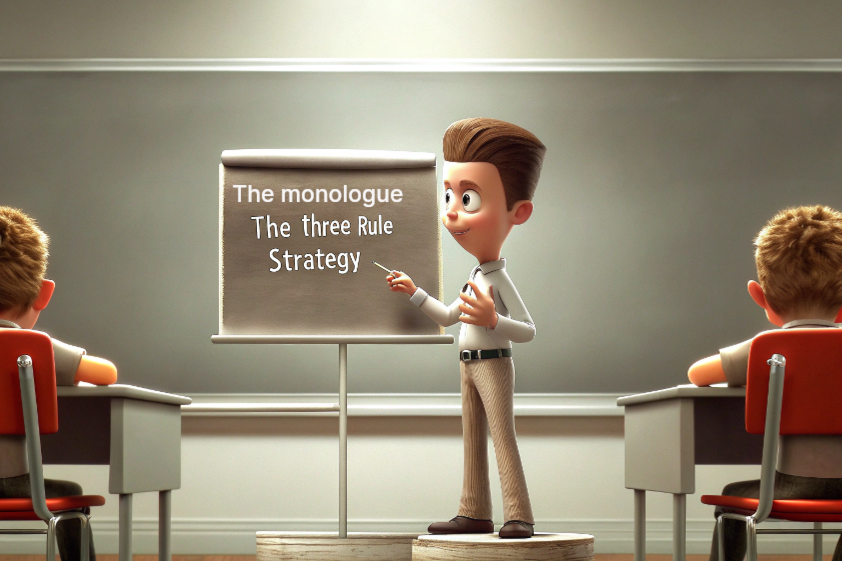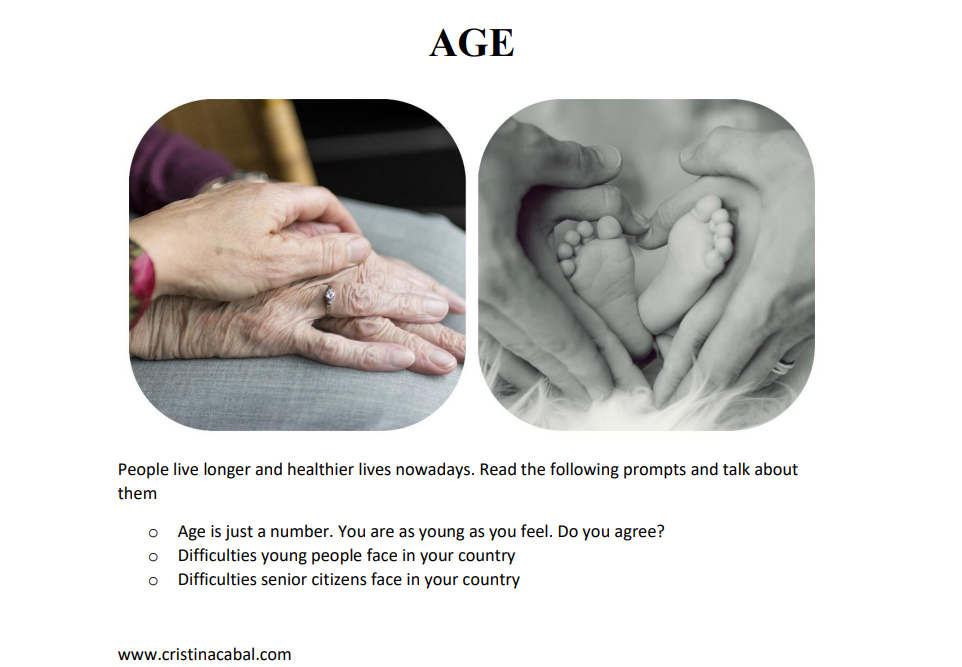- Read the Title
The title gives you the main topic—don’t skip over it! It’s your guide to what you need to discuss.
- Make Use of the Photos
While you don’t have to describe the images, you can refer to them to support your ideas. They’re there to inspire and give context, so use them wisely.
- Cover the Three Statements
You’ll need to address all three statements provided in your worksheet. Aim to distribute your time evenly among them. A good rule of thumb? Spend about one minute per statement to ensure a balanced and well-developed monologue.
What Is the Rule of Three?

It’s simple: For each of the three statements on your worksheet, think of three ideas to build your response. These ideas can reflect whether you:
- Agree with the statement.
- Disagree with it.
- Partially agree or disagree, offering a mix of perspectives.
Tips
Tip: you are only allowed 2 minutes to prepare. Listen up!!! You won’t have time to write full sentences. Write only ideas. Think quickly how you can elaborate on them , but don’t write it. Just think. Otherwise, you won’t have time to cover the 3 statements in your worksheet.
Tip: This isn’t about listing ideas and moving on. It’s about developing them fully and thoughtfully. You’ll need to use vocabulary and grammar that matches your level, especially if you’re aiming for C1. The goal is to show depth in your argument and coherence in your structure.
Here’s another tip: You might not always need all three ideas to deliver an excellent monologue. If you elaborate enough on two ideas, giving details, examples, or explanations, that’s perfectly fine. It’s better to say fewer things with substance and clarity than to rush through a long list of undeveloped points.
Making It Work in Practice
When you’re planning, ask yourself:
- What’s my opinion on this statement?
- Can I support it with an example, a reason, or a counterpoint?
- How can I link my ideas smoothly to create a natural flow?
For example, instead of quickly stating, “I agree because X, Y, and Z,” aim for something like:
- “I partially agree with this statement because… [idea 1]. In particular, I’ve noticed that… [example]. On the other hand, there’s another perspective to consider… [idea 2].”
By following the Rule of Three, you’ll create monologues that are organized, engaging, and packed with meaningful content.
Flow Is Important
When you’re speaking, connect your ideas smoothly. Use natural expressions like:
- “With this in mind…”
- “Another point to consider is…”
- “Building on that idea…”
These phrases will help you create a conversational flow but…
Tip: while the examiner might be pleased that you have used an expression like “when it comes to …ing” to introduce an idea, it is only OK to use it once during your monologue. If you use the same expressions over and over again, it will have the opposite effect.




Glad you find it helpful! Thanks for your comment!
Thank you, Cristina!